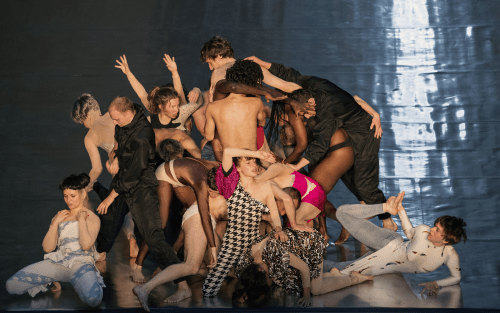
Why art’s obsession with dance endures
Choreographic details are not the only things that can get lost in the theater: contemporary/modern dance history can dissolve into obscurity due to its innate ephemerality and the industry’s preference for creating new live work over preserving the old. As such, the fact that art museums – houses of preservation by nature – have an increasing interest in dance is a great help in the quest to capture, document, and share lesser-known performance histories. The current Edges of Ailey exhibition at the Whitney Museum of American Art in New York, which celebrates the legacy of pre-eminent African-American dancer, choreographer, and civil-rights activist Alvin Ailey, is a prime example. It’s an ‘important political move’ according to Lewis, since postmodern dance figures, such as the Judson Dance Theater collective, who enjoyed a retrospective at New York’s Museum of Modern Art (MoMA) back in 2018, have been the artworld’s key reference point for dance for too long. ‘Historically, Black dancers have been written out of that trajectory, so it’s super important to have someone as iconic and influential as Ailey [celebrated in an art context],’ she says. ‘Finally we can break with a really reductive idea of what dance is.’
While not as easy as acquiring inanimate art objects, museums have become more skilled at collecting and conserving dance over the years. ‘A flat documentation of a great dance piece doesn’t cut it,’ says Wood. Instead, methods such as showcasing products of collaboration between dancers and artists from other disciplines or certifying dancers to serve as living archives of specific works are becoming more common. Carmela Hermann Dietrich and Sarah Swenson, for example, are instructors of Italian-American choreographer Simone Forti’s seminal Dance Constructions (1960–1), which were acquired by MoMA in 2015. Likewise, Wookey is a teacher of Rainer’s Trio A, and was responsible for staging the aforementioned performance of the work in Berlin. Alongside colleagues, she’s currently investigating how the unique verbal lexica choreographers use may be helpful in the conservation process. ‘There’s this old idea that dancers use their body but not their voice, but [they] are incredibly articulate. I have hundreds of note cards capturing [Rainer’s] language,’ she says, explaining that the words she used to talk about dance would be wildly different to someone like Martha Graham. ‘Words [in choreography] are fascinating and open up worlds.’